
Posts Tagged: Culex
Olfaction and Taste Symposium: Learn About Honey Bees, Mosquitoes, Butterflies, Fruit Flies and More...
Honey bees, mosquitoes, cabbage butterflies, fruit flies and more... You'll hear about a variety of insects when the international symposium, “Insect Olfaction and Taste in 24 Hours Around the Globe,” takes place beginning at 9 a.m., Pacific Daylight Time (PDT), Wednesday, Aug....
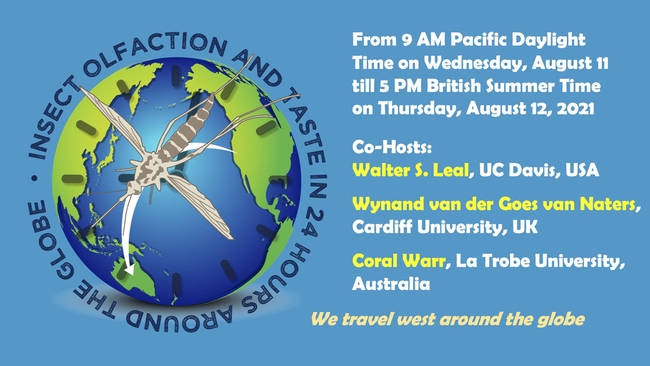
The free international symposium, “Insect Olfaction and Taste in 24 Hours Around the Globe,” begins at 9 a.m, Pacific Daylight Time (PDT), Wednesday, Aug. 11.
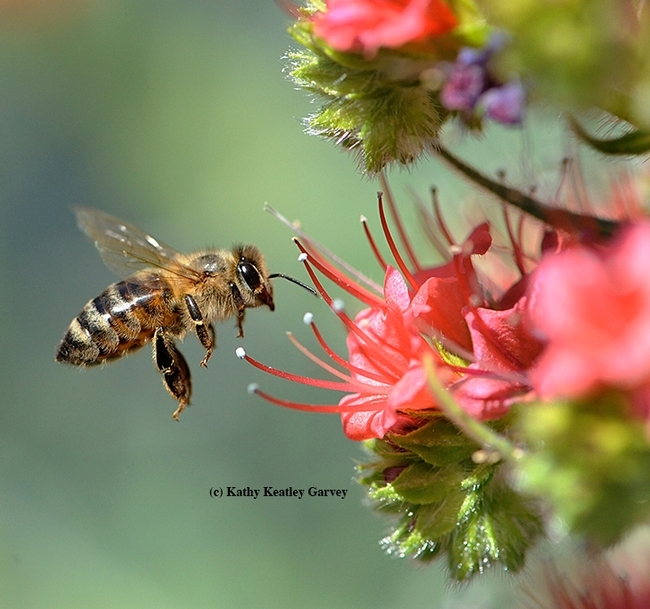
The honey bee will be one of the insects featured at the international symposium, “Insect Olfaction and Taste in 24 Hours Around the Globe,” (Photo by Kathy Keatley Garvey)
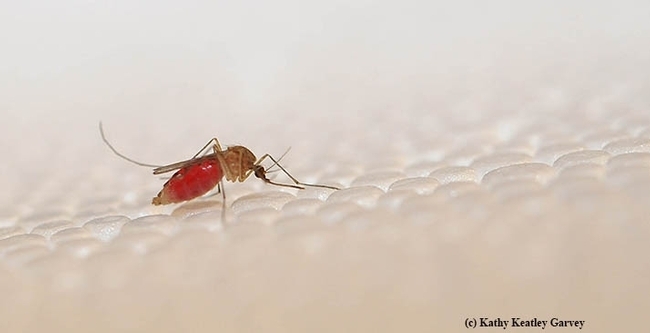
The symposium will zero in on olfaction/taste research on three species of mosquitoes, including Culex. This is Culex quinquefasciatus. (Photo by Kathy Keatley Garvey)
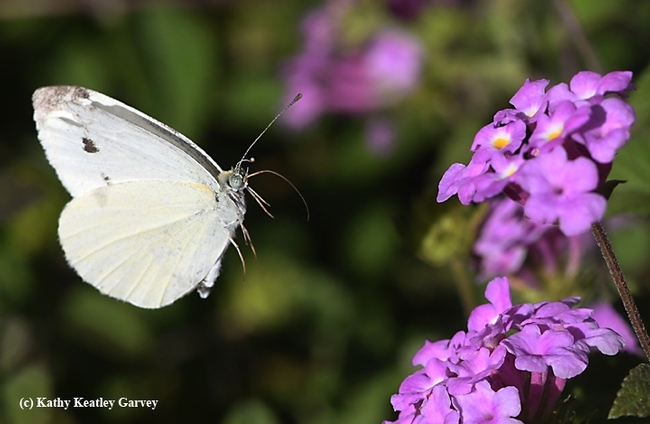
The cabbage butterfly, Pieris rapae, will share the spotlight at the international symposium, “Insect Olfaction and Taste in 24 Hours Around the Globe." (Photo by Kathy Keatley Garvey)
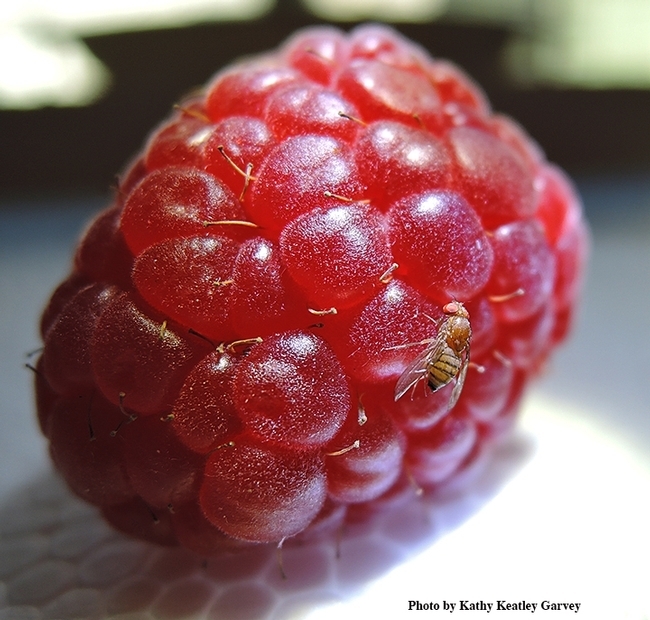
Drosophila suzukii, the spotted-wing drosophila, is a pest of raspberries and other fruit. The insect will be discussed at the symposium on "Insect Olfaction and Taste in 24 Hours Around the Globe." (Photo by Kathy Keatley Garvey)
UC Davis Team: Mosquito Odorant Receptors Are Sensitive to Floral Compunds
It's well known that female mosquitoes possess a highly developed sense of smell. They manage to find us, don't they? Even when we're doing our best to try to avoid them! It's not so well-known that mosquitoes, both male and female, frequent plants to feed on nectar for energy. And now UC Davis...
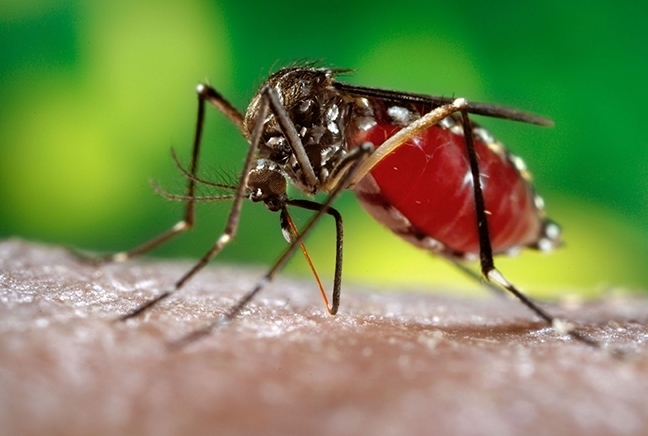
Aedes aegypti, the yellow fever mosquito (CDC Photo)
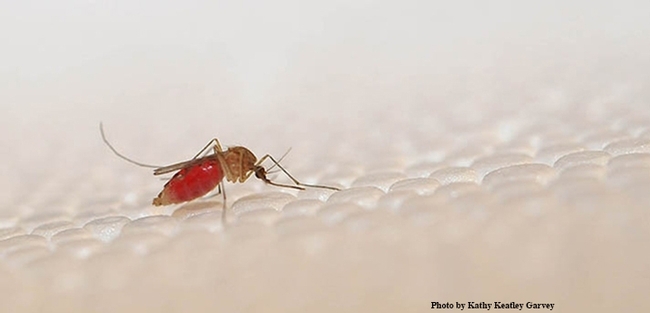
Culex quinquefasciatus, the southern house mosquito. (Photo by Kathy Keatley Garvey)
The Work of William Hazeltine II Lives On
The late medical entomologist William Emery Hazeltine II (1926-1994) worked tirelessly in mosquito research and public health. Thanks to the generosity of his family, his work is continuing through memorial research grants to outstanding graduate students at the University of California,...
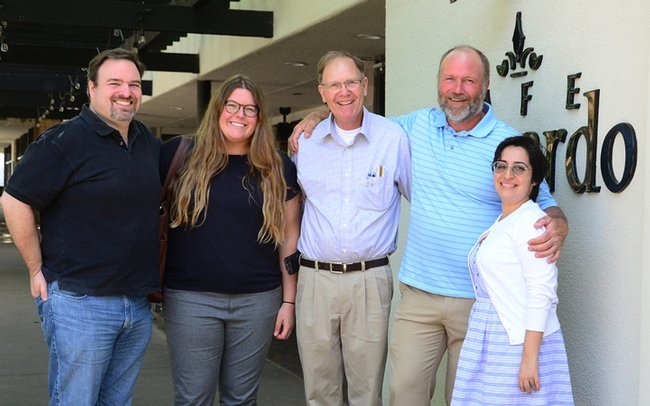
Brothers Craig and Lee Hazeltine recently honored Bill Hazeltine Research Award recipients Olivia Winokur and Maribel "Mimi" Portilla at a luncheon. UC Davis medical entomologist Geoffrey Attardo, assistant professor, Department of Entomology and Nematology, joined them. From left are Geoffrey Attardo, Craig Hazeltine, Lee Hazeltine and Maribel Portilla. (Photo by Kathy Keatley Garvey)
Davis Teen: How Those Pesky Mosquitoes Led to a Scientific Publication
Listen to ABC Channel 10 News, broadcast Dec. 22Seventeen-year-old Helena Leal doesn't like mosquitoes, but they like her. “I always get bitten by mosquitoes more often than my family and friends,” says the Davis High School senior. “I get fairly bad reactions to mosquito bites,...
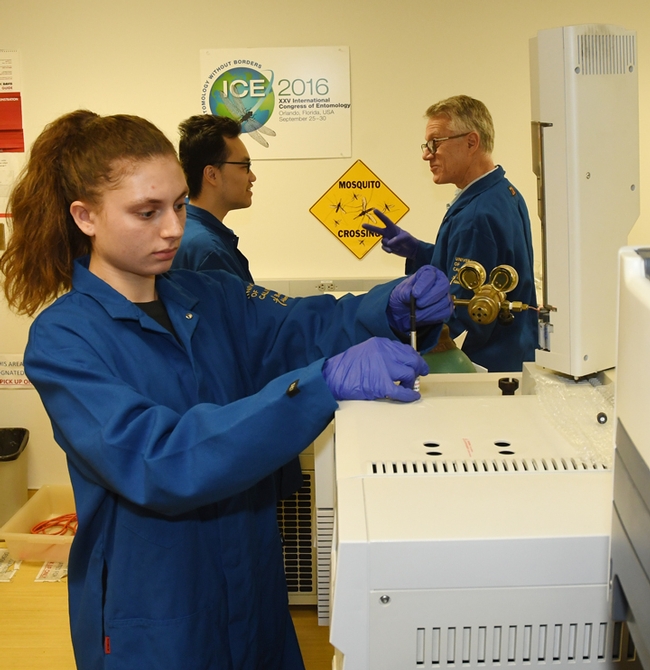
Researcher and lead author Helena Leal, 17, a scholar at Davis High School, injects a sample of odorants trapped in a solid phase micro-extraction syringe intothe gas chromatography–mass spectrometry (GC-MS) in the Walter Leal lab at UC Davis. In back are chemical ecologist Walter Leal (right) and UC Davis student researcher Kaiming Tan. (Photo by Kathy Keatley Garvey)
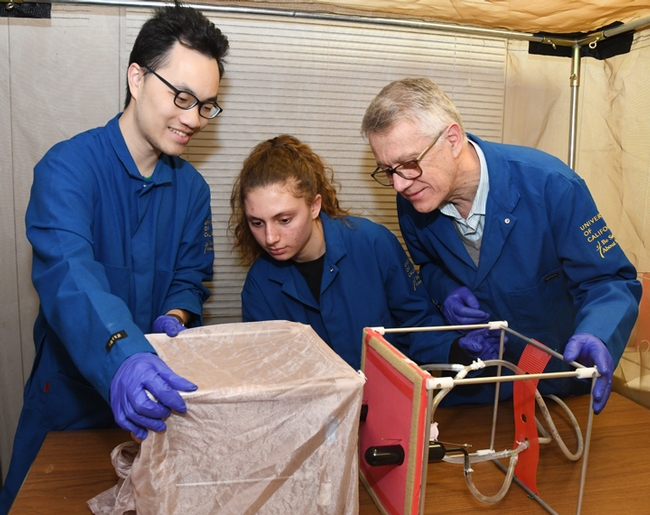
Working on the mosquito cage assay are (from left) researchers Kaiming Tan, a UC Davis student in the Walter Leal lab; lead author Helena Leal of Davis High School, and UC Davis chemical ecologist Walter Leal. (Photo by Kathy Keatley Garvey)
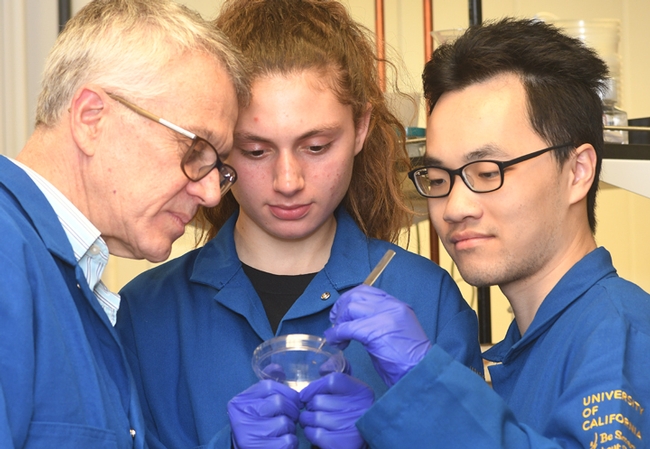
Looking over mosquito specimens are (from left) UC Davis chemical ecologist Walter Leal and two members of the research team: daughter Helena Leal, lead author; and UC Davis student Kaiming Tan. Not pictured is UC Davis student researcher Justin K. Hwang. (Photo by Kathy Keatley Garvey)
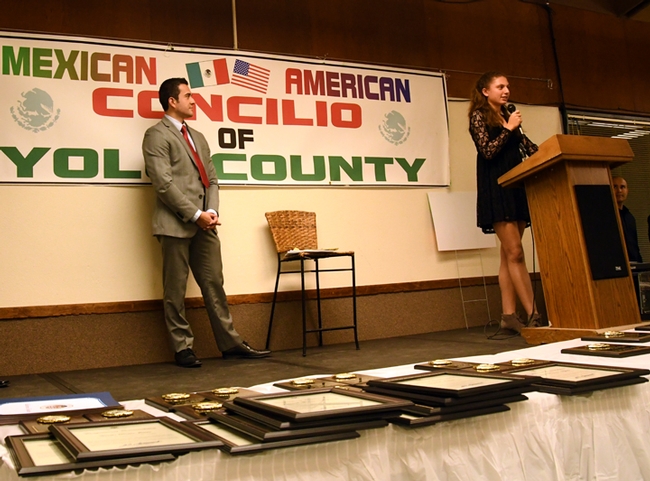
Davis High School scholar Helena Leal addresses the crowd at the Mexican-American Yolo County Concilio Scholarship Dinner. At left is keynote speaker Carlos Saucedo of ABC Channel 10.(Photo by Kathy Keatley Garvey)
UC Davis Researcher: What Repellents and Doses Are Best to Prevent Zika Virus
If you're traveling to—or living in--a Zika virus-infested area, it's far better to use DEET rather than Picaridin and to use higher, rather than lower, doses of DEET because lower doses do not work well with older mosquitoes, newly published research from the University of California, Davis...
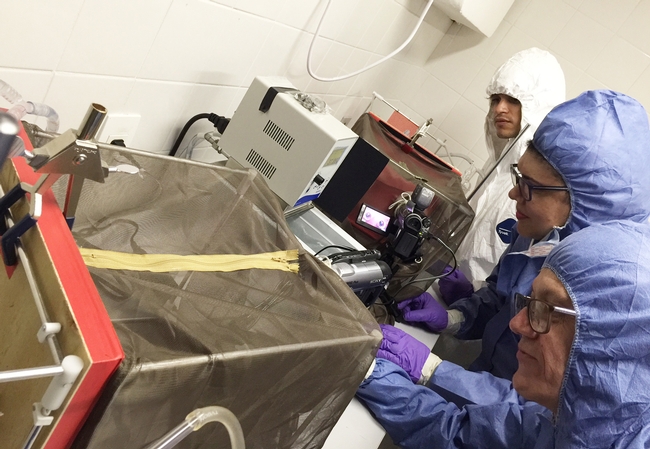
Working on zika-virus research are UC Davis chemical ecologist Walter Leal (foreground) and colleagues and co-authors Rosangela Barbosa (center) and graduate student Gabriel Faierstein of FIOCRUZ-PE, Recife, Brazil.
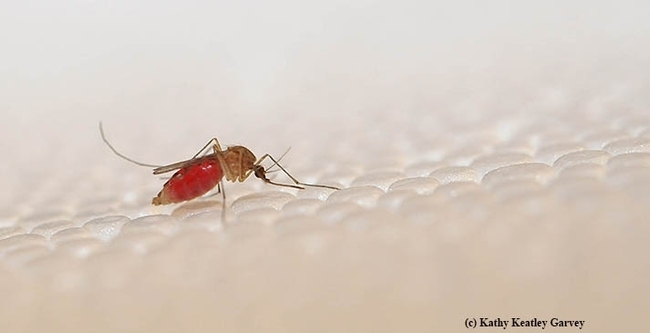
The southern house mosquito, Culex quinquefasciatus, can also transmit the Zika virus, but the primary mosquito is the yellow fever mosquito, Aedes aegypti. (Photo by Kathy Keatley Garvey)
